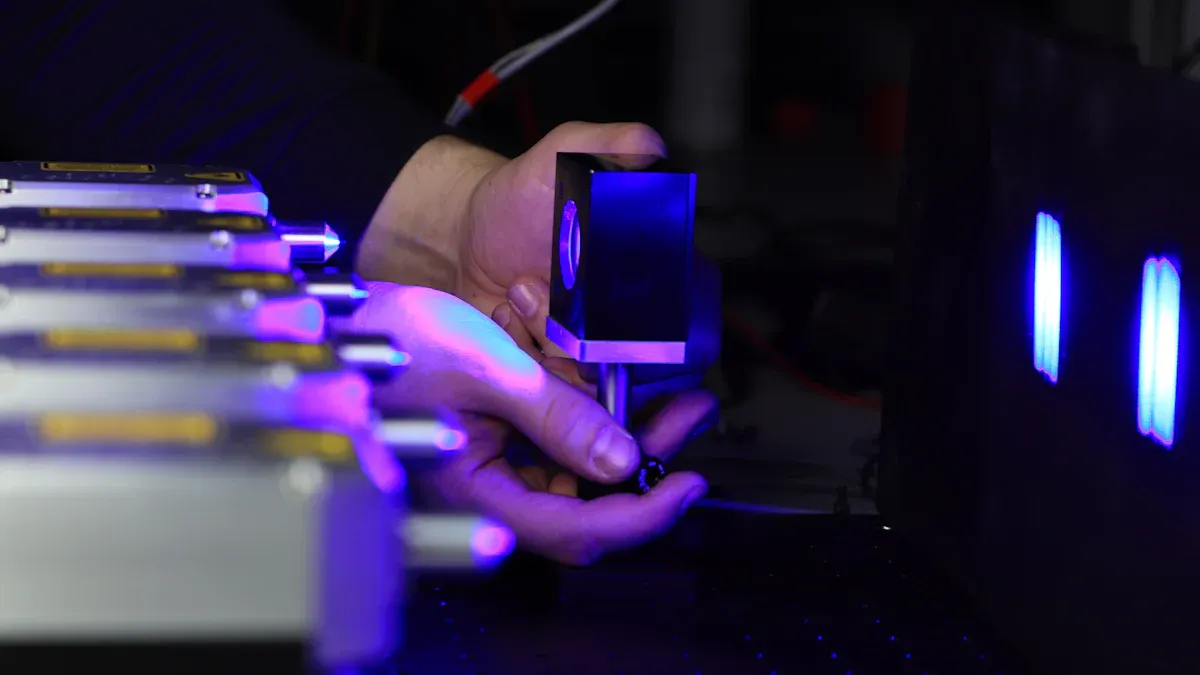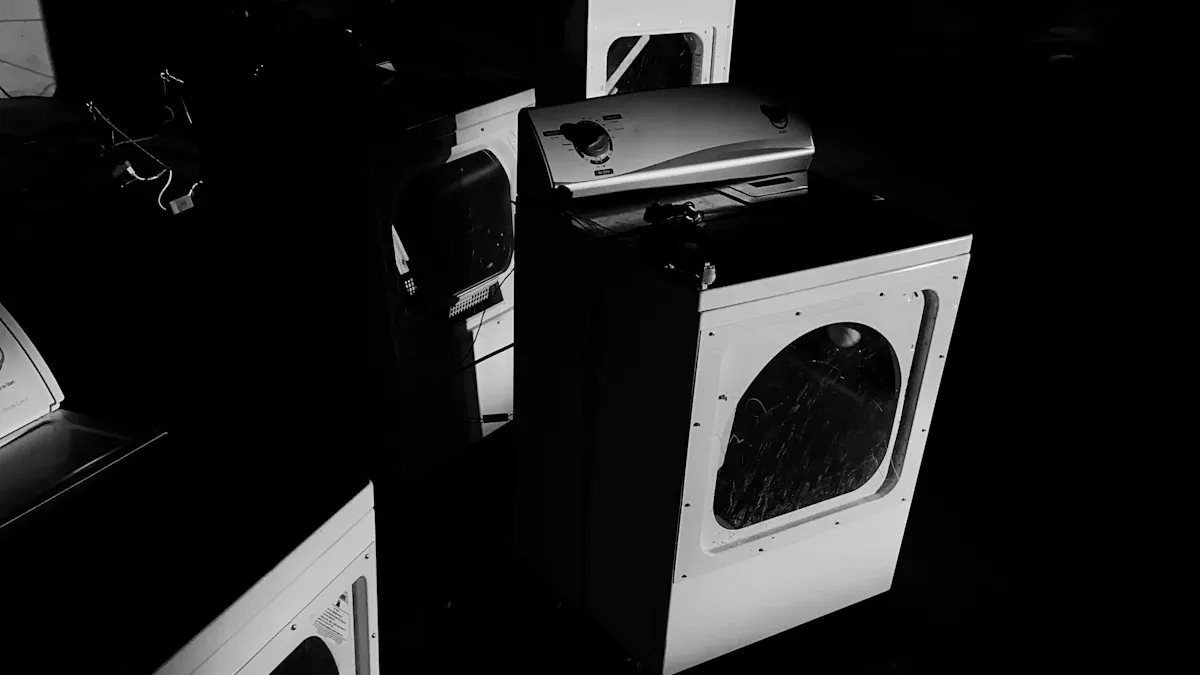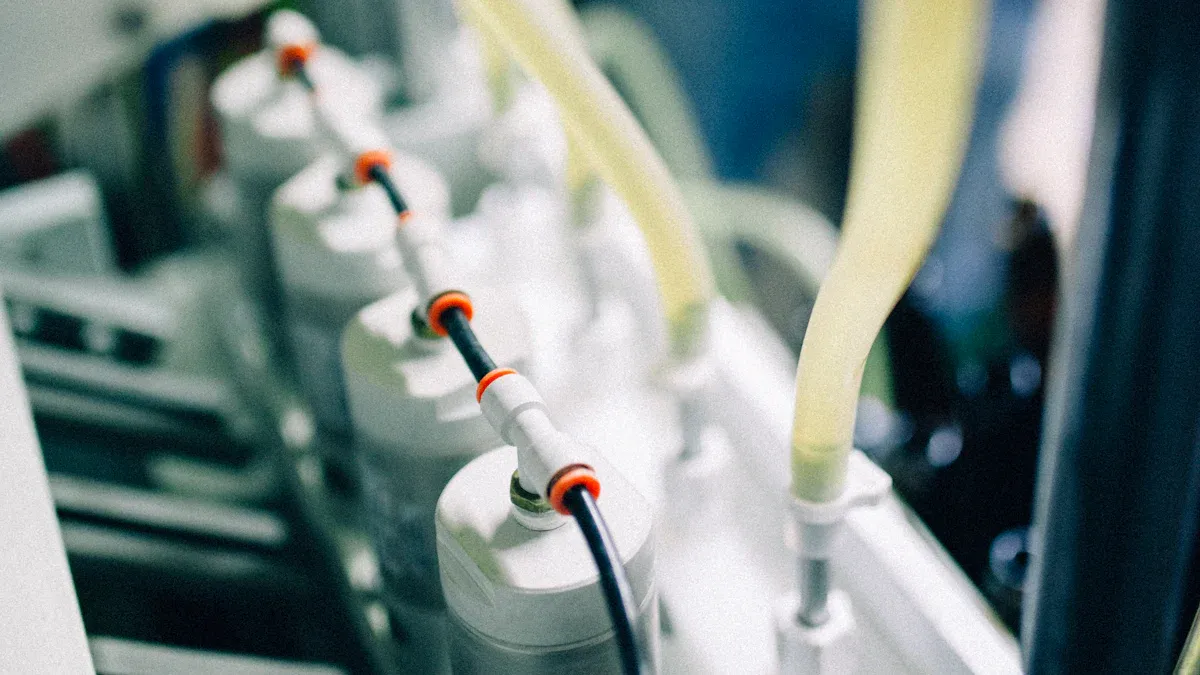
You rely on the working principle of SMT curing ovens to cure adhesives and solder paste quickly and evenly on PCBs. These ovens use controlled heat or light to ensure each component sticks firmly to the board. You benefit from precise temperature control, which leads to better product reliability and higher production rates. This process plays a key role in electronics manufacturing, especially before wave soldering, by helping you achieve secure and consistent connections.
Key Takeaways
-
SMT curing ovens are essential for quickly and evenly curing adhesives and solder paste on PCBs, leading to better product reliability.
-
IR curing ovens use infrared radiation for fast heating, making them ideal for preheating surfaces and ensuring strong connections.
-
UV curing ovens provide instant curing with minimal heat, perfect for sensitive components and specific adhesives that react to UV light.
-
Choosing the right oven depends on your adhesive type and production needs; IR ovens suit most adhesives, while UV ovens are for UV-sensitive ones.
-
Proper curing enhances product quality by increasing bond strength and reducing defects, ensuring reliable electronic assemblies.
Types

IR Curing Oven
You often use infrared (IR) curing ovens in SMT lines for their fast and efficient heating. These ovens use IR lamps or tubes to deliver direct heat to the surface of your printed circuit boards (PCBs). This method works well for glue curing, special soldering, and even drying anti-corrosion paint. You can rely on IR ovens for:
-
Preheating surfaces helps adhesives like epoxy resin stick better.
-
Precision heating for solder paste, ensuring strong connections.
-
Rapid heating during SMD testing for chipsets and transistors.
-
Drying paint layers quickly and evenly.
-
Soldering complex radiator assemblies with copper tubes.
IR curing ovens have gained traction in the market because they offer speed and flexibility. You can adjust the temperature and heating zones to match your production needs.
UV Curing Ovens
You turn to ultraviolet (UV) curing ovens when you need fast, energy-efficient curing for specific adhesives and coatings. UV ovens use high-intensity UV light to trigger a chemical reaction in special adhesives, causing them to harden almost instantly. This process works best for applications that require minimal heat exposure, such as sensitive electronic components.
You benefit from UV curing ovens in situations where:
-
You need to cure adhesives without raising the temperature of the PCB.
-
You want to speed up production with instant curing.
-
You work with materials that respond to UV light, like certain resins and coatings.
Comparing Curing Ovens and Reflow Ovens
Note: Curing ovens and reflow ovens serve different purposes in SMT production. You use curing ovens to harden adhesives and sealants, while reflow ovens melt solder paste to create electrical connections.
Here is a quick comparison:
|
Feature/Function |
SMT Reflow Ovens |
Curing Ovens |
|---|---|---|
|
Main Purpose |
Melts solder paste for electrical connections |
|
|
Temperature Control |
Precise profiles for soldering |
Controlled heat for strong bonds |
|
Applications |
Soldering SMT components |
Die attach, package sealing, wafer-level packaging |
|
Cooling Mechanism |
Efficient cooling for productivity |
Maintains heat for curing |
|
Flexibility |
Customizable heating/cooling zones |
Controlled thermal profiles for curing |
|
Quality Assurance |
Ensures high yield in soldering |
Ensures defect-free chip packaging |
You should choose the right oven based on your process needs. Curing ovens focus on bonding and packaging, while reflow ovens handle soldering tasks. Both play vital roles in electronics manufacturing, but each supports a different step in your SMT line.
Working Principle

IR Ovens
You use IR curing ovens to apply heat directly to your printed circuit boards. The working principle relies on infrared radiation, which heats the surface of the PCB and the adhesive. This method works well for drying and curing because it removes moisture efficiently and improves the physical and chemical properties of coatings.
Here are the main heat sources you find in IR ovens:
-
Finned radiators and stainless steel heating tubes generate the required heat.
-
Fan-assisted convection ventilation spreads the heat evenly.
-
Short-wave IR heat sources deliver high-intensity heat for fast curing.
Convection ventilation plays a key role in the working principle of IR ovens. While infrared energy heats the surfaces quickly, convection ensures that every part of the board receives enough heat. This leads to uniform curing, even for complex shapes or larger components.
You can see the differences between IR and UV curing ovens in the table below:
|
Technology |
Working Principle |
Key Features |
|---|---|---|
|
IR |
Uses infrared radiation to apply heat to PCBAs, ideal for drying and curing processes. |
Efficient moisture removal enhances the physical and chemical properties of coatings. |
|
UV |
Utilizes ultraviolet radiation to polymerize and harden UV-sensitive coatings. |
Faster cycle times reduce thermal stress on components. |
Temperature control is important in IR ovens. For example, a 2-meter IR curing oven can reach up to 150°C and cure in about 20 minutes. Some vertical ovens operate from room temperature to 200°C, with curing times as short as 5 minutes. You can adjust these settings to match your adhesive and board requirements.
UV Ovens
UV curing ovens use a different working principle. You expose the adhesive or coating to ultraviolet light, which triggers a photochemical reaction. This reaction causes the adhesive to harden almost instantly. You benefit from this process because it reduces thermal stress on sensitive components and speeds up production.
The UV light source in these ovens often comes from mercury lamps. These lamps emit light in the 200-400 nm wavelength range, with a main peak at 365 nm and power up to 6 kW. You can customize the wavelength, curing time, and intensity to suit your materials.
The curing time for UV adhesives is very short. For example, acrylates and epoxy acrylates cure in 5 to 20 seconds at intensities of 50 to 150 mW/cm². Polyurethane acrylics cure in 10 to 20 seconds at 50 mW/cm². High-intensity curing can finish in just 5 seconds.
You must follow safety guidelines when operating UV ovens. Always wear protective glasses, face shields, lab coats, gloves, and closed-toe shoes. Make sure your workspace has proper ventilation to remove any toxic gases. Use screens to shield yourself from UV exposure and follow OSHA, ANSI, and IEC standards.
Step-by-Step Process
You follow a clear process when using SMT curing ovens, whether IR or UV:
-
Preheating: You gradually heat the circuit board to a specific temperature. This step ensures the entire board receives uniform heat.
-
Thermal Soak: You hold the board at the preheating temperature for 60-120 seconds. This activates the chemicals in the adhesive or solder paste.
-
Curing or Reflow: In IR ovens, you rapidly heat the board to cure the adhesive. In UV ovens, you expose the adhesive to UV light for a few seconds, causing it to harden.
-
Cooling: You cool the board quickly to solidify the adhesive or solder, which improves bond quality.
-
Washing (Optional): You may wash the board to remove any chemical residues, ensuring cleanliness.
This step-by-step process ensures that your adhesives cure properly and your components stay firmly attached. By understanding the working principle of each oven type, you can choose the best method for your production line and improve the reliability of your electronic products.
Application
In SMT Lines
You see SMT curing ovens as a key part of your automated production line. These ovens fit right after the adhesive dispensing stage and before wave soldering. You use them to cure adhesives that hold components in place during the next steps. Modern ovens often include AI integration, which gives you precise control over temperature and curing profiles. Intelligent monitoring systems adjust the process in real time, so you get consistent results every time.
Here is how curing ovens improve your SMT line:
|
Benefit/Practice |
Description |
|---|---|
|
Faster and more controlled curing processes lead to shorter cycle times and higher throughput. |
|
|
Temperature Profiling |
Optimal temperature profiles ensure consistent and reliable curing results tailored to materials. |
|
AI Integration |
Enhances precision control and process optimization through real-time analytics and adaptive calibration. |
You monitor several process parameters to keep your line running smoothly. These include zone power, belt speed, and temperature offsets. You also track peak temperature, ramp rates, and soak time. By watching these factors, you make sure each board gets the right treatment.
Automation in modern ovens helps you reduce human error and boost throughput. Smart technologies let you make quick adjustments, which improves uniformity and lowers defect rates. Hybrid curing systems give you flexibility, so you can handle different materials without slowing down production.
Impact on Quality
Proper curing has a big effect on the quality of your electronic products. When you use the right working principle and control the process, you increase the mechanical strength of your assemblies. Faster curing and higher temperatures both raise the shear strength of adhesives. A larger adhesive fillet can double the strength of underfilled solder joints.
Here are some ways curing ovens improve product quality:
|
Benefit |
Impact on Product Quality and Defect Rates |
|---|---|
|
Enhances product quality |
|
|
Improved reliability and functionality |
Reduces defect rates |
|
Increased production efficiency |
Boosts overall product quality |
|
Reduced manufacturing costs |
Allows for better resource allocation |
|
Improved strength and durability |
Enhances product longevity |
If you do not cure adhesives properly, you may face issues like weak bonding, component displacement, or uneven glue application. These problems can lead to defects and lower reliability. By using curing ovens with precise control, you ensure strong bonds and accurate component placement.
Tip: Always monitor your curing profiles and adjust settings as needed. This helps you maintain high quality and avoid costly rework.
You now understand the working principle and main types of SMT curing ovens. When you select an oven, consider factors like temperature control, automation, and energy efficiency. The table below highlights what you should look for:
|
Factor |
Description |
|---|---|
|
Precise Temperature Control |
Multi-zone ovens ensure even heating, critical for high-density PCBA. |
|
Efficiency and Automation |
Fast operation and support for automated production lines are essential. |
|
Energy Efficiency |
Models that save power and reduce nitrogen use lower costs and environmental impact. |
You improve product quality and reliability by following best practices and using advanced ovens with IoT features. Always match your oven’s capabilities to your production needs.
FAQ
What is the main difference between IR and UV curing ovens?
You use IR ovens to heat adhesives with infrared radiation. You use UV ovens to cure special adhesives with ultraviolet light. IR ovens work well for most adhesives. UV ovens work best for adhesives that react to light.
How do you choose the right curing oven for your SMT line?
You should check your adhesive type and production speed. IR ovens suit most standard adhesives. UV ovens work for UV-sensitive adhesives. You also need to consider board size, energy use, and automation features.
Can you cure all adhesives with UV ovens?
No, you cannot. Only adhesives that react to UV light will cure in a UV oven. Always check the adhesive’s specifications before you choose your curing method.
What safety steps should you follow when using curing ovens?
You must wear protective gear like gloves and safety glasses. You should keep your workspace well-ventilated. Always follow the manufacturer’s safety instructions to avoid burns or UV exposure.
Why does temperature control matter in curing ovens?
Precise temperature control helps you avoid overheating or undercuring. You get stronger bonds and fewer defects. Good control also protects sensitive components from damage.
